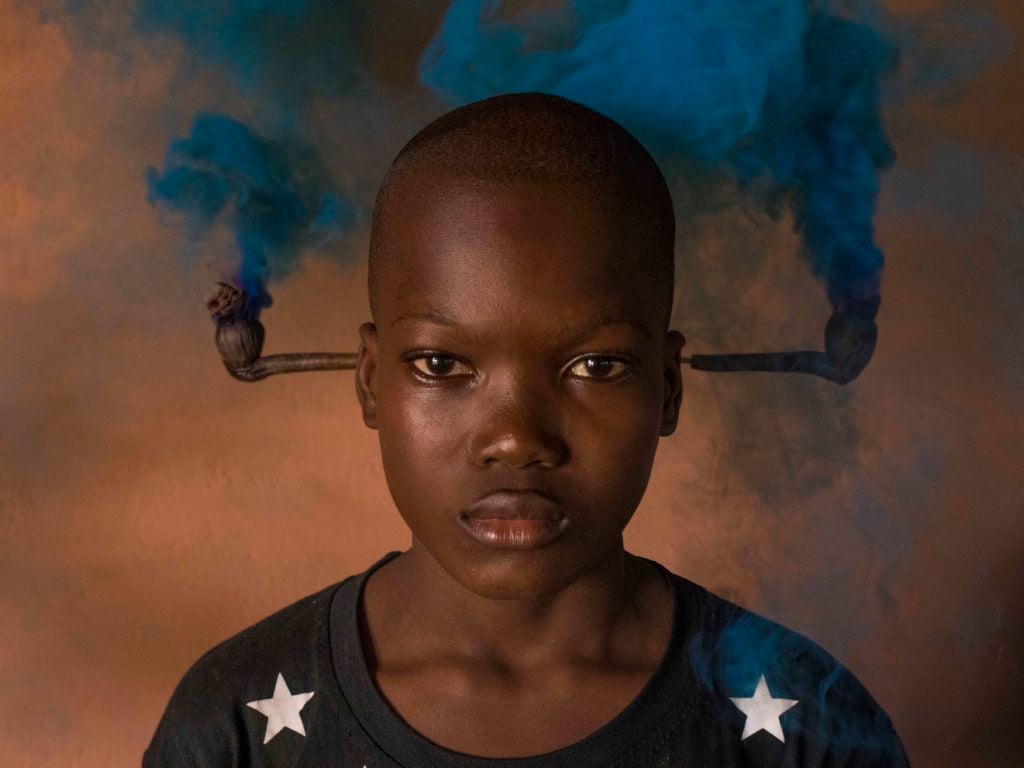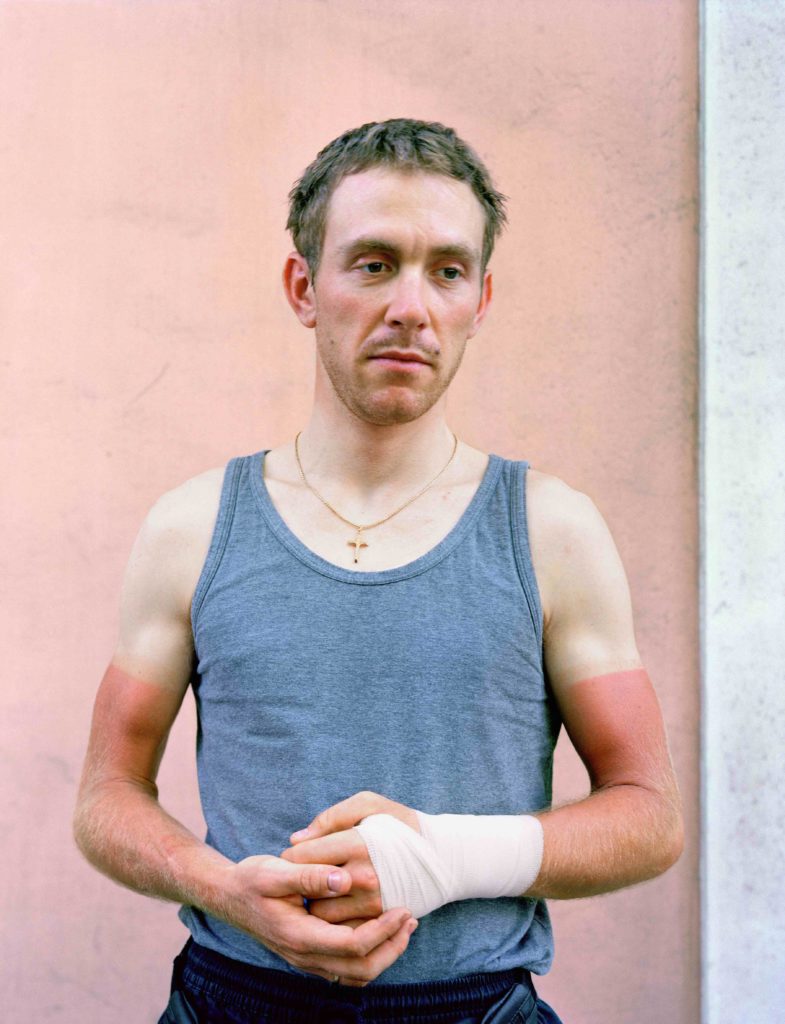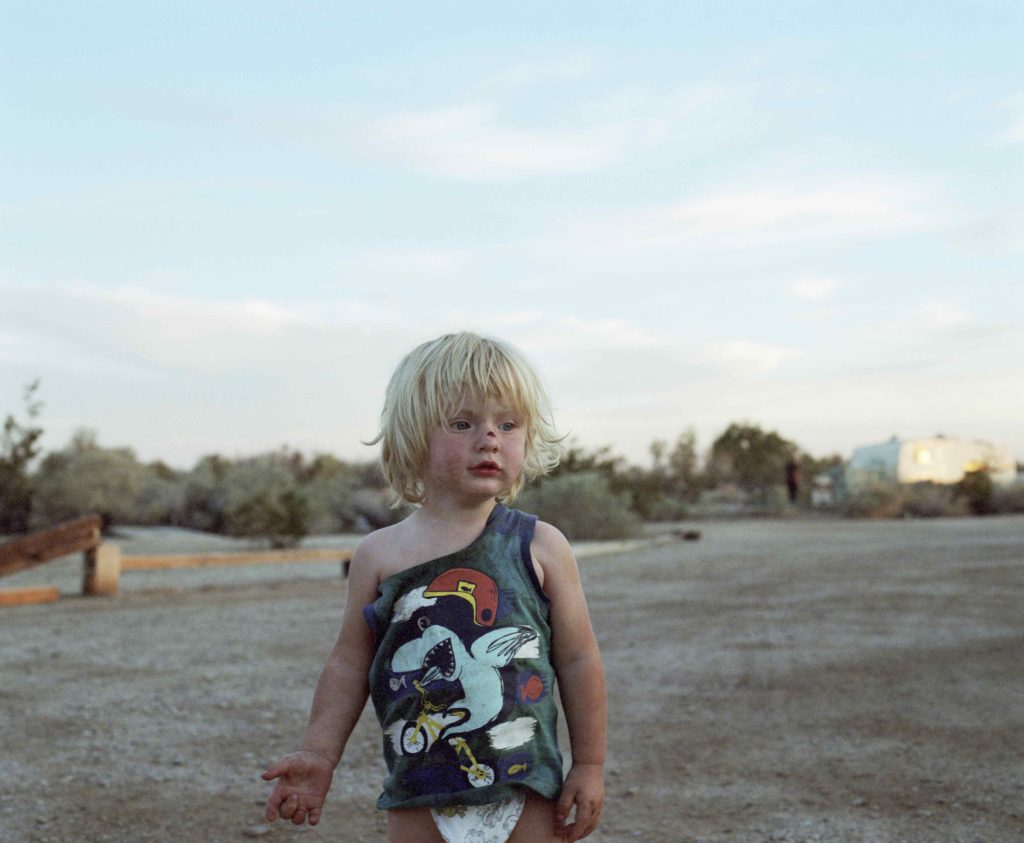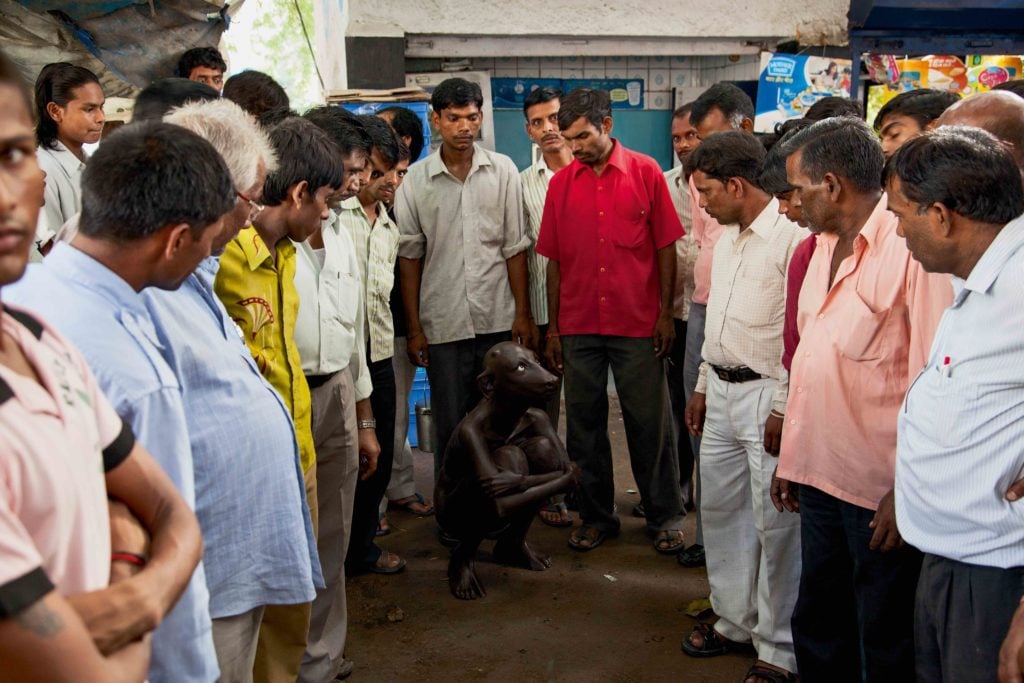Art World
Gender Disparity at the Rencontres d’Arles Spurs a Debate About the Status of Women in Photography
Just 34 percent of the photographers on view at the prestigious French festival are women.

Just 34 percent of the photographers on view at the prestigious French festival are women.

The Rencontres d’Arles is arguably the most important photography event of the year. From tiny galleries to medieval churches to a Roman amphitheater, the international festival exuberantly takes over the historic French town of Arles every summer. But this year’s edition, which runs through September 23, was marked by murmurs criticizing the lack of women photographers on view.
Women make up the majority of graduates from art programs worldwide, yet just 34 percent of the photographers on view at the event were women. Last week, a number of leading figures in the industry—including Whitechapel Gallery director Iwona Blazwick, Slade School of Fine Art director Susan Collins, and photographer Dragana Jurišić—took their condemnation of the gender imbalance public to sign an open letter to artistic director Sam Stourdzé.
The letter, published in the French-language newspaper Libération, points out that among the 15 “major” solo shows at the festival, just three were devoted to work by women. Further, in the 49 years the festival has been running, it has only twice had a female artistic director.
Together, the signatories call for Stourdzé to discontinue this “androcentric” vision of photography by promising gender parity among exhibitors at the festival’s 50th edition next year. “Throughout the world, female artists who have been trained in the best art schools are more than 60 percent of the graduates,” the letter reads. “Yet, they receive less support, and represent barely 20 percent of the artists exhibited in France.”
“The reasons for this evaporation are many,” the letter continues, “but one of them, a major one, is the lack of awareness and commitment of institutions and festival leaders, that leave women in the margins.” As of this writing, the letter has been signed by around 340 people.

Véronique Ellena, The Cyclist, from the “Those with Faith” series (2003). Courtesy of the artist.
A spokesman for the festival suggested that enforcing equal representation might not be the best solution. “The topic of female photographers is a complex issue that the Rencontres is currently investigating, even if the selection of artists is always primarily based on the quality of the work, without considering the gender of the artist,” he told artnet News, adding that the broader official program in 2018, which includes associated events, featured 31 solo shows by men and 16 by women.
The festival has taken some steps to improve the gender balance. In 2015, it introduced gender parity in the candidates selected for its emerging photographers award, the New Discovery prize. The following year, the festival introduced the Prix de la Photo Madame Figaro, a prize launched in collaboration with the French weekly Madame Figaro, which is awarded to a woman photographer whose work is shown at the festival. This year, the Rencontres d’Arles invited the collective Les Filles de la Photo to discuss the topic and launch a gender equality monitor. Women accounted for five of the festival’s nine award winners, as well as 21 of 31 jury members, and eight of its 10 management team members this year.
“There is still a way to go to achieve a fair balance” without establishing quotas, which could “cast doubt on the credibility of an artistic selection,” the spokesman said.

Laura Henno, Ethan, Slab City (USA) (2017). Courtesy of the artist and Galerie Les Filles du Calvaire.
The only female photographer to appear in the top 200 auction prices in the artnet Price Database is Cindy Sherman. Although Sherman appears high on the list, holding the record for the second-most-expensive photography lot ever sold—$6.8 million for a set of Untitled Film Stills—she remains the only woman to appear alongside a long list of male names, including Richard Prince, Andreas Gursky, Gilbert & George, Jeff Wall, Marcel Duchamp, and Robert Rauschenberg.
The price differences between male and female photographers is “completely crazy,” says French photographer Marina Gadonneix, who won the LUMA Arles Dummy Book Award this year. Yet she says there is a “real energy” today in France to address gender imbalances, and that female gallery and museum directors increasingly aim to promote the work of women.
The prestigious Prix Pictet, the $103,000 photography and sustainability prize founded in 2008 in Geneva, has only been awarded to one woman in history: Valérie Belin, in 2015. Although Belin acknowledges that women “remain in the minority” at Arles this year, she told artnet News that those who are included stand out for “the quality of their work and the singularity of their vision,” including Prune Nourry and Véronique Ellena.
As a judge of this year’s Prix Pictet, Belin says that gender was not a factor in the jury’s discussion. “If I recall correctly,” she says, “only four female photographers were shortlisted for the prize, against eight male photographers. Speaking for myself, the gender issue was not a selection criterion, and I don’t think it should be considered as one.”

Prune Nourry, Men Without Women, Holy Daughter, New Delhi (2010). Courtesy of the artist.
How to shatter the glass ceiling in photography remains an open question. Some fear that forcing gender parity in shows like Arles could end up with women being criticized for so-called positive discrimination, with the belief that they’ve been rewarded for their gender rather than their work. On the other hand, it could encourage organizers to look harder for qualified women. After all, the ratio of female to male photographers suggests that the work is out there.
Several databases already exist to showcase the pre-vetted work of established women photographers. The renowned photographer Jill Greenberg launched a website in January, alreadymade.org, to list hundreds of female advertising and art photographers. And last year the Vietnamese-American photographer Daniella Zalcman launched Women Photograph, a private database of more than 700 independent female and non-binary documentary photographers.
Whatever the festival organizers decide to do, there’s something undeniably poetic about the idea of the 50th anniversary of the Rencontres having an even 50/50 split of male and female photographers.